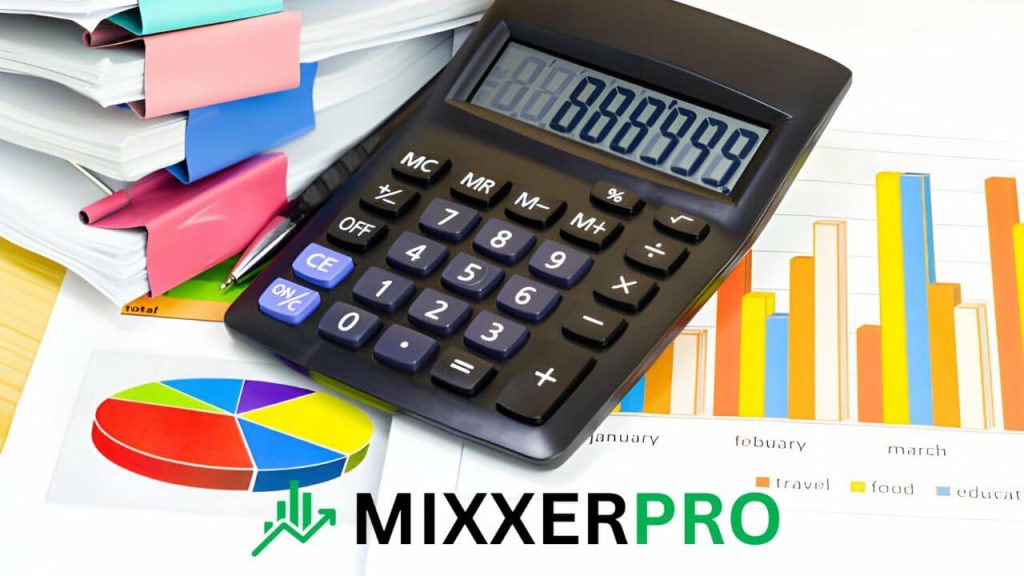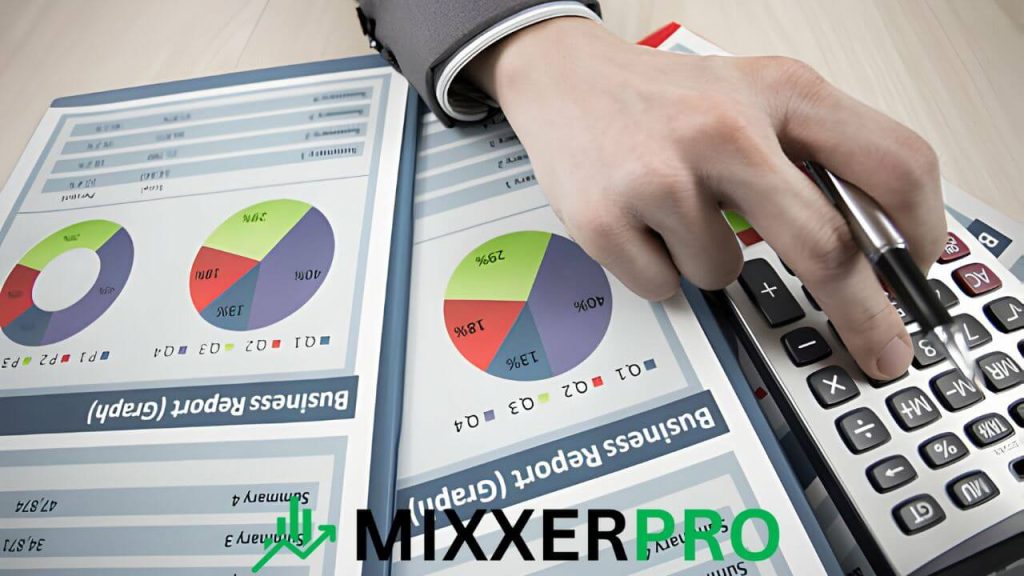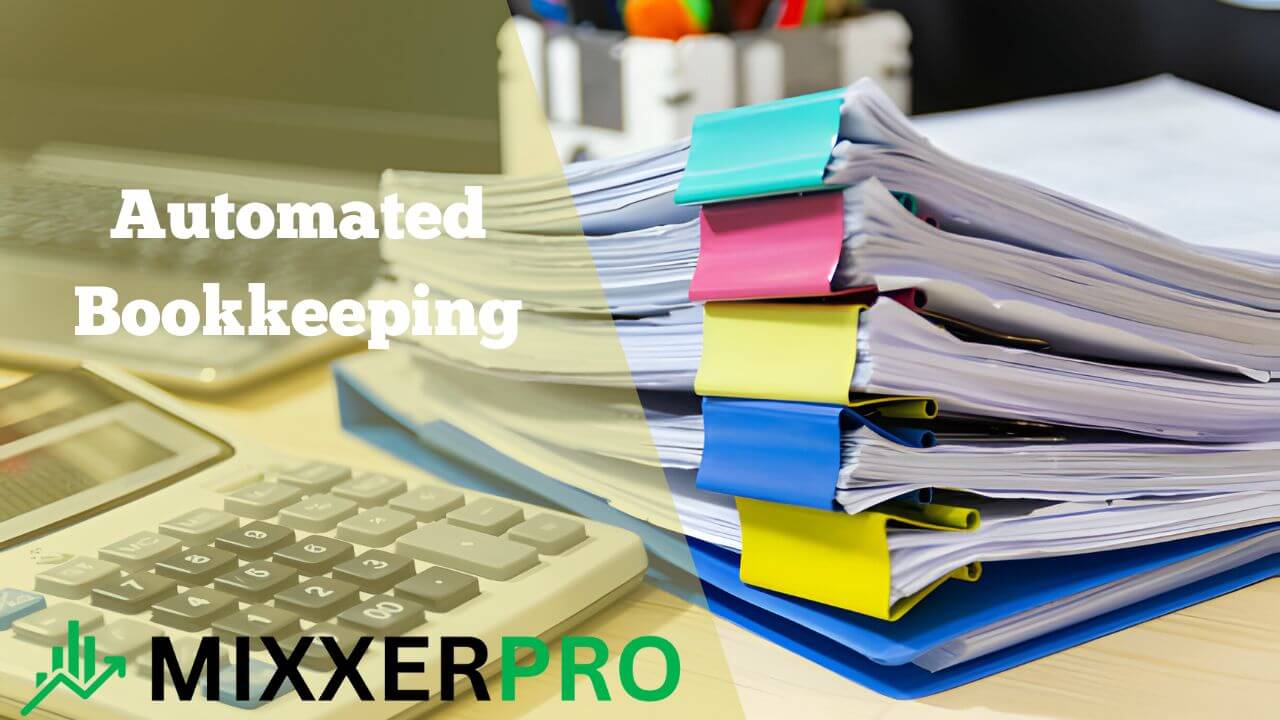Automated Bookkeeping: Streamline Your Finances Effortlessly
Automated bookkeeping streamlines financial tracking and reporting, saving time and improving accuracy. Say goodbye to manual data entry and cumbersome spreadsheets – automated software makes bookkeeping hassle-free and efficient.
In today’s fast-paced business environment, staying on top of your financial records is crucial. Manual bookkeeping can be time-consuming, prone to errors, and a drain on resources. Fortunately, with automated bookkeeping, you can streamline your financial tracking and reporting processes, saving both time and money.
Automated bookkeeping software eliminates the need for manual data entry and tedious spreadsheet management, offering a hassle-free and efficient solution. By automating repetitive tasks, such as invoicing, expense tracking, and payment reconciliations, businesses can focus on growth initiatives and make informed financial decisions. We will explore the benefits of automated bookkeeping and how it can transform your business operations. Read on to discover how this innovative solution can revolutionize your financial management.

Table of Contents
Evolution Of Bookkeeping To Automation
Bookkeeping has come a long way from traditional pen-and-paper methods to software-based systems, and now to the era of automation. This evolution has brought about significant advancements in the way businesses manage their financial records. By embracing automated bookkeeping solutions, companies can streamline their processes, enhance accuracy, and save valuable time and resources.
Traditional Bookkeeping Methods
In the past, businesses relied heavily on manual bookkeeping methods to maintain their financial records. This involved recording transactions in physical ledgers and using calculators or adding machines for calculations. While this approach served its purpose, it was time-consuming, prone to human error, and lacked the efficiency that modern businesses require. Moreover, retrieving and analyzing data from physical ledgers could be a tedious task.
Transition To Software-based Systems
The introduction of software-based bookkeeping systems marked a significant leap forward in the world of accounting. With the advent of applications like QuickBooks, businesses were able to embrace technology and shift their bookkeeping operations to digital platforms. These software solutions offered features such as computerized invoicing, expense tracking, and financial reporting – eliminating the need for manual data entry and tedious calculations.
The transition to software-based systems brought several benefits. Businesses gained access to real-time financial data, which allowed them to make informed decisions more efficiently. Additionally, these systems facilitated seamless collaboration among team members, enabling better communication and coordination within the finance department.
However, software-based systems still require manual input and monitoring, leaving room for human error and potentially decreasing efficiency. This brought about the need for further automation in the bookkeeping process.
Rise Of Automated Bookkeeping Solutions
Automation has revolutionized bookkeeping, offering businesses the opportunity to streamline their financial operations to a whole new level. Automated bookkeeping solutions leverage technologies such as artificial intelligence (AI) and machine learning to perform tasks that were previously handled manually. By automating processes like data entry, categorization, and reconciliation, businesses can significantly reduce errors, eliminate repetitive tasks, and allocate their resources more effectively.
One of the key advantages of automated bookkeeping solutions is the ability to integrate seamlessly with other business tools and systems. For example, these software applications can sync with e-commerce platforms, POS systems, and bank accounts, allowing for automatic data capture and synchronization. This integration not only saves time but also ensures that financial records are accurate and up to date.
Furthermore, automated bookkeeping solutions provide powerful reporting and analytics capabilities. Businesses can generate customized financial reports, gain insights into their cash flow, and identify trends or patterns that can inform strategic decision-making. These features empower organizations to have a comprehensive view of their financial health, enhancing overall performance and sustainability.
In conclusion, the evolution of bookkeeping from traditional pen-and-paper methods to software-based systems and now to automated solutions has transformed the way businesses manage their finances. Automation brings efficiency, accuracy, and improved decision-making capabilities to the bookkeeping process. By embracing these solutions, organizations can focus their efforts on growing their core business while leaving repetitive and time-consuming tasks to intelligent systems.
Benefits Of Automated Bookkeeping
Automated bookkeeping is revolutionizing the way businesses manage their financial records and processes. With the power of technology, companies are now able to streamline their bookkeeping tasks, reducing the amount of time and effort traditionally required. In this blog post, we will explore the many benefits of automated bookkeeping and how it can transform your business.
Accuracy And Error Reduction
One of the primary advantages of automated bookkeeping is the significant improvement in accuracy and reduction of errors. Manual data entry is prone to mistakes, whether it’s transposing numbers or omitting important details. These errors can have far-reaching consequences on financial records, leading to incorrect financial statements, inaccurate tax filings, and potential legal issues.
Automated bookkeeping minimizes such errors by eliminating the need for manual data entry. With automation, data is directly imported into the system from various sources such as bank statements, invoices, and receipts. This not only saves time but also reduces the risk of human error. Additionally, automated bookkeeping software often includes built-in validation checks and calculations, further enhancing accuracy.
Speed And Efficiency Gains
Automated bookkeeping brings unparalleled speed and efficiency to the financial record-keeping process. Gone are the days of manually reconciling bank statements, entering each transaction one by one, and searching for specific records amidst a mountain of paperwork. With automation, these tasks are completed in a fraction of the time, allowing businesses to focus on more strategic activities.
By automating routine bookkeeping tasks, such as data entry, bank reconciliations, and generating financial reports, businesses can allocate their resources more effectively. Employees who previously spent hours on manual bookkeeping can now dedicate their time to higher-value tasks, such as analyzing financial data, identifying trends, and making informed business decisions.
Real-time Financial Insights
Another significant benefit of automated bookkeeping is the availability of real-time financial insights. Traditional bookkeeping practices often involve monthly or quarterly updates, making it difficult to obtain the most up-to-date financial information. In contrast, automated bookkeeping solutions provide real-time access to financial data, allowing businesses to make informed decisions promptly.
With automated bookkeeping, businesses can generate financial reports on demand and assess their financial health at any given moment. This helps in identifying financial trends, tracking expenses, and managing cash flow effectively. Real-time financial insights empower businesses to respond swiftly to challenges and seize opportunities in a rapidly changing business environment.
Overall, the benefits of automated bookkeeping are undeniable. Accuracy and error reduction, speed and efficiency gains, and real-time financial insights are just a few of the advantages that automated bookkeeping brings to businesses. By embracing automated bookkeeping, companies can streamline their financial processes, enhance accuracy, and gain a deeper understanding of their financial position, ultimately driving their success and growth.
Implementing Bookkeeping Automation
Implementing bookkeeping automation can greatly streamline financial processes and improve operational efficiency for businesses. The transition from manual to automated systems requires careful planning and consideration. In this section, we will delve into the various aspects of implementing bookkeeping automation, starting with the initial setup and integration.
Initial Setup And Integration
Setting up an automated bookkeeping system involves several key steps. Firstly, you need to assess your business requirements and choose a suitable software or tool that aligns with your needs. Consider factors such as scalability, reporting capabilities, and integration options.
Once you have selected the appropriate software, the next step is to integrate it into your existing infrastructure. This typically involves establishing connections with other systems such as your CRM or point-of-sale (POS) system. Integration allows for seamless data flow between different platforms, eliminating the need for manual data entry and reducing the chances of errors.
The key benefits of initial setup and integration:
- Streamline financial processes
- Eliminate manual data entry
- Reduce errors and inconsistencies
- Improve data accuracy and reliability
- Enhance reporting capabilities
By investing time and effort into the initial setup and integration process, businesses can lay a solid foundation for an efficient automated bookkeeping system.
Training For Staff And Management
Implementing a new bookkeeping system requires adequate training for both staff members and management to ensure a smooth transition. It is essential for everyone involved to be well-versed in utilizing the automated tools effectively.
- Understanding the features and functionalities of automated bookkeeping software
- Learning how to input and track financial data accurately
- Generating reports and analyzing financial information
- Implementing proper data security measures
When staff members are properly trained, they can utilize the automated bookkeeping system to its full potential, saving time and effort in their daily tasks. Ongoing training and regular updates ensure everyone stays up-to-date with the latest features and enhancements of the software.
Migration From Manual To Automated Systems
The migration process from manual to automated bookkeeping systems needs to be carefully managed to minimize disruptions and ensure a successful transition. It involves transferring existing financial data from manual records to the new automated system.
The crucial steps for a smooth migration include:
- Conducting a thorough review and audit of existing financial records
- Cleaning up and organizing the data to eliminate inconsistencies and errors
- Converting data into a compatible format for the automated system
- Importing the data into the new system and verifying its accuracy
- Performing thorough testing before fully relying on the automated system
By following these steps and ensuring data integrity throughout the migration process, businesses can successfully transition from manual bookkeeping to an automated system.
Choosing The Right Software
Selecting the right software for automated bookkeeping is a critical decision for any business. With the plethora of options available in the market, finding the perfect fit can be overwhelming. It is important to consider key features, compatibility with existing systems, and scalability for business growth. In this article, we will explore these factors in detail to help you make an informed choice.
Key Features To Look For
When it comes to choosing automated bookkeeping software, key features are crucial to assess the effectiveness and efficiency of the solution. Here are a few essential features you should consider:
- Bank Integration: Look for software that seamlessly integrates with your bank accounts, providing automatic transaction syncing and categorization.
- Invoice Management: Ensure that the software allows you to easily create, send, and track invoices, reducing the time and effort spent on manual invoicing.
- Expense Tracking: The software should have robust expense tracking capabilities, allowing you to capture and categorize expenses, generate expense reports, and streamline the reimbursement process.
- Reporting and Analytics: Look for software that provides detailed financial reports, customizable dashboards, and key performance indicators (KPIs) to gain valuable insights into your business’s financial health.
Compatibility With Existing Systems
Ensuring seamless integration with your existing systems is essential when choosing automated bookkeeping software. The last thing you want is to invest in a solution that doesn’t play well with your current setup. Be sure to consider the following compatibility factors:
- Software Integration: Check if the software integrates with other business applications you are using, such as your customer relationship management (CRM) software, project management tools, or payroll systems. Integration will streamline workflow and eliminate the need for manual data entry.
- File Format Support: Ensure that the software supports the file formats you commonly use, such as CSV, Excel, or PDF, to easily import and export data as needed.
- Cloud-based vs. On-premise: Consider whether a cloud-based solution or an on-premise installation would be a better fit for your business’s infrastructure and operational needs. Cloud-based software offers the advantage of accessibility and real-time data updates from any location, while on-premise allows for more control over data security.
Scalability For Business Growth
As your business grows, your bookkeeping needs will evolve. It is crucial to select software that can scale along with your business. Consider the following factors when analyzing a software’s scalability:
- User Limits: Ensure that the software can accommodate the number of users your business requires, both now and in the future.
- Data Storage Limits: Check if the software has ample storage capacity to handle your business’s expanding data needs.
- Additional Modules: Look for software that offers additional modules or add-ons to support more complex accounting needs as your business grows. Examples include multi-currency capabilities, inventory management, and payroll processing.
- Pricing Structure: Evaluate the software’s pricing structure to ensure it aligns with your projected growth. Consider options that allow for flexibility in upgrading or downgrading plans as needed.
Automated Bookkeeping In Action
As the world of business becomes increasingly digital, automated bookkeeping provides an efficient and accurate solution for managing financial transactions. By utilizing advanced software and technology, businesses can streamline their accounting processes, saving time and minimizing errors. In this article, we will delve into how automated bookkeeping transforms day-to-day operations, the interaction it has with other business processes, and the vital monitoring and maintenance protocols that ensure its effectiveness.
Typical Day-to-day Operations
Automated bookkeeping revolutionizes the way businesses handle their daily financial tasks. Instead of relying on manual data entry, repetitive calculations, and endless paperwork, organizations can now automate various accounting activities. These include:
- Recording financial transactions such as sales, purchases, and expenses
- Generating invoices and receipts automatically
- Synchronizing bank and credit card transactions
- Categorizing income and expenses for reporting purposes
- Preparing financial statements like balance sheets and income statements
With automated bookkeeping, these processes occur seamlessly and in real time, eliminating the need for manual intervention and reducing the risk of errors. This allows businesses to focus on core operations and make well-informed financial decisions promptly.
Interaction With Other Business Processes
Automated bookkeeping does not exist in isolation; it integrates with various other business processes to create a unified system. This integration enhances efficiency and accuracy throughout the entire organization. Here are some ways automated bookkeeping interacts with other areas:
- Inventory Management: Automated bookkeeping software can be integrated with inventory management systems, enabling businesses to instantly update their financial records when goods are bought or sold.
- Payroll: Automating payroll processes allows payroll data to flow seamlessly into the bookkeeping system, ensuring accurate recording of employee wages, deductions, and tax obligations.
- Budgeting and Forecasting: By incorporating automated bookkeeping with budgeting and forecasting tools, businesses can access real-time financial data, making it easier to compare actual performance with projected figures and adjust strategies accordingly.
- E-commerce Platforms: With integration between bookkeeping software and e-commerce platforms, transaction data from online sales and related expenses can be imported automatically, ensuring accurate and up-to-date financial records.
Monitoring And Maintenance Protocols
While automated bookkeeping simplifies financial tasks, it is crucial to implement monitoring and maintenance protocols to ensure its continued reliability. These include:
- Data Backup: Regularly backing up financial data prevents loss in the event of system failure or other unforeseen circumstances.
- Security Measures: Implementing robust security measures protects sensitive financial information from unauthorized access and cyber threats.
- Software Updates: Regularly updating bookkeeping software ensures compatibility with the latest technology and security patches.
- System Audits: Conducting periodic audits of the automated bookkeeping system helps identify and rectify any issues, ensuring data accuracy and integrity.
By adhering to these monitoring and maintenance protocols, businesses can maintain the optimal performance of their automated bookkeeping system and have peace of mind regarding their financial data.
Advanced Features And Analysis
In the world of bookkeeping, automation has revolutionized the way businesses handle their financial records. And when it comes to advanced features and analysis, automated bookkeeping is a game-changer. With its ability to streamline processes and harness the power of data, automated bookkeeping offers a host of benefits that can take your financial management to the next level. In this post, we will delve into two key areas where automated bookkeeping truly shines: custom reporting and forecasting, and integration with AI and machine learning.
Custom Reporting And Forecasting
One of the standout features of automated bookkeeping is its ability to generate custom reports and forecasts tailored specifically to your business needs. Gone are the days of sifting through stacks of paperwork and manually inputting data into spreadsheets. With automated bookkeeping, you can access real-time reports that provide a comprehensive overview of your financial health in a matter of seconds.
Whether you require detailed balance sheets, profit and loss statements, or cash flow analysis, automated bookkeeping has got you covered. You can easily generate reports that cater to different stakeholders or highlight specific areas of interest, such as sales performance or expense tracking. By harnessing the power of automation, you can save valuable time and gain valuable insights into your business’s financial performance.
Integration With AI and Machine Learning
Another exciting aspect of automated bookkeeping is its integration with AI and machine learning technologies. These cutting-edge tools can analyze vast amounts of financial data to identify patterns, trends, and opportunities that might otherwise go unnoticed. By leveraging AI and machine learning, automated bookkeeping brings an added layer of intelligence to your financial analysis.
For instance, AI algorithms can learn from historical financial data to make accurate predictions about future revenue, expenses, and cash flow. This forecasting capability can help you make informed decisions and develop robust financial strategies with confidence. Additionally, AI-powered automation can streamline repetitive tasks, such as data entry and categorization, freeing up time for you to focus on more strategic aspects of your business.
Moreover, the integration of AI and machine learning with automated bookkeeping opens the door to predictive analytics in financial health. By taking advantage of these advanced technologies, you can gain insight into the potential financial risks your business may face and take proactive measures to mitigate them. Predictive analytics can help you identify early warning signs of financial instability and ensure the long-term stability of your business.
In conclusion, automated bookkeeping’s advanced features and analysis capabilities have transformed the way businesses manage their financial records. With custom reporting and forecasting, as well as integration with AI and machine learning, businesses can leverage data-driven insights to make informed decisions and achieve financial success. Embracing automated bookkeeping can not only save time and resources but also provide a competitive edge in today’s fast-paced business landscape.
Navigating Regulatory Compliance
In the world of finance, regulatory compliance is a critical aspect that businesses cannot afford to overlook. When it comes to bookkeeping, understanding and adhering to legal requirements is of utmost importance. This is where automated bookkeeping software shines, offering a streamlined approach to managing regulatory compliance. In this article, we will explore the significance of understanding legal requirements, the role of automated bookkeeping in audits, and how it helps businesses keep up with changing regulations.
Understanding Legal Requirements
Running a business is more than just managing profits and expenses. It involves complying with a set of legal requirements imposed by regulatory bodies. From tax obligations to financial reporting standards, businesses need to stay in line with these regulations to avoid penalties and maintain trust with stakeholders. Automated bookkeeping software comes with built-in features that help businesses understand and adhere to these legal requirements.
With its intelligent algorithms, automated bookkeeping software can identify and categorize transactions, ensuring that they are recorded accurately. This not only streamlines the bookkeeping process but also minimizes errors and discrepancies that may arise due to manual entry. Additionally, the software can generate reports that comply with specific accounting standards and tax obligations, saving valuable time and effort for businesses.
Automated Bookkeeping And Audits
Audits are an integral part of financial governance, allowing businesses to assess their financial health and validate the accuracy of their records. With automated bookkeeping software, the audit process becomes more efficient and thorough. The software keeps track of every transaction and provides a clear audit trail, eliminating the need for sifting through piles of paperwork.
| Audit Benefits | Automated Bookkeeping Features |
| Efficiency | The software keeps track of every transaction, providing a clear audit trail. |
| Accuracy | Automated categorization and recording of transactions minimize errors and discrepancies. |
| Speed | Generating audit reports is quick and hassle-free, saving time for businesses. |
Keeping Up With Changing Regulations
The regulatory landscape is constantly evolving, and businesses need to adapt to stay compliant. Automated bookkeeping software makes it easier for businesses to keep up with changing regulations. The software receives regular updates to reflect the latest legal requirements and accounting standards. By using automated bookkeeping software, businesses can ensure that their financial records are always in line with the current regulations.
Furthermore, the software can generate reports that meet specific regulatory requirements, keeping businesses prepared for scrutiny by regulatory bodies. This proactive approach not only saves businesses from potential penalties but also instills confidence in stakeholders, showcasing a commitment to regulatory compliance.
In conclusion, navigating regulatory compliance is crucial for businesses, and automated bookkeeping software proves to be an invaluable tool in this endeavor. By understanding legal requirements, aiding audits, and keeping up with changing regulations, businesses can streamline their bookkeeping processes and maintain compliance, effectively mitigating risks and bolstering their financial governance.
Credit: quickbooks.intuit.com
Security Measures In Automation
As businesses increasingly rely on automated bookkeeping software, ensuring the security of financial data becomes a top priority. By adopting security measures, companies can protect their sensitive information and mitigate the risk of potential breaches. In this article, we will discuss the key security practices for bookkeeping software and how to respond to potential breaches.
Protecting Financial Data
Protecting financial data is a critical aspect of an automated bookkeeping system. To safeguard your sensitive information from unauthorized access, consider the following security measures:
- Use strong passwords: Implement strong password policies that enforce the use of complex passwords and periodic password changes. Encourage employees to create unique passwords not easily guessable.
- Two-factor authentication (2FA): Enable 2FA on your bookkeeping software to add an extra layer of security. This requires users to provide two forms of identification, such as a password and a unique code sent to their mobile devices.
- Regular data backups: Perform regular backups of your financial data to ensure that it can be restored in case of data loss or system failures.
- Encrypt sensitive data: Utilize encryption methods to protect sensitive financial information both during storage and transmission. Encrypting data makes it unreadable for unauthorized parties even if it is intercepted or stolen.
Security Best Practices For Bookkeeping Software
When it comes to bookkeeping software, following security best practices can significantly reduce vulnerabilities:
- Regular software updates: Keep your bookkeeping software up to date with the latest security patches and updates. Software providers often release these updates to address vulnerabilities and enhance security.
- User access controls: Establish strict user access controls, granting permissions only to authorized personnel who need to view or modify financial data.
- Audit trails: Enable audit trail functionalities to track and monitor any changes made to financial records. This helps identify suspicious activities and provides accountability.
- Network security: Implement firewalls, intrusion detection systems, and other network security measures to protect your bookkeeping software from external threats.
Responding To Potential Breaches
In the unfortunate event of a potential breach, it is crucial to take immediate action to minimize the impact and protect your financial data:
- Isolate affected systems: Remove compromised systems from the network to isolate the breach and prevent further damage.
- Investigate the breach: Conduct a thorough investigation to determine the cause and extent of the breach. This includes analyzing log files and identifying the entry point of the attack.
- Notify relevant parties: Notify internal stakeholders, such as management and IT personnel, about the breach. Additionally, consider informing external parties, such as clients or regulatory authorities, depending on the severity and legal requirements.
- Implement remedial measures: Take corrective actions to address the vulnerabilities that led to the breach. This may involve revising security protocols, upgrading software, or enhancing employee training.
- Learn from the breach: Use the incident as a learning opportunity. Review your security practices, identify areas for improvement, and implement measures to prevent similar breaches in the future.
Frequently Asked Questions For Automated Bookkeeping

Is There A Way To Automate Bookkeeping?
Yes, there are automated software and tools available for bookkeeping, making it easier and more efficient. These tools automate repetitive tasks, such as data entry and categorization, saving time and reducing errors in the process. By automating bookkeeping, businesses can streamline their financial processes and focus on other important tasks.
What Is an Automated Bookkeeping System?
An automated bookkeeping system is a technology-based solution that automatically records, organizes, and manages financial transactions and data. It simplifies and streamlines bookkeeping processes, reducing manual effort and human error. This saves time, improves accuracy, and provides real-time access to financial information for businesses.
Is Bookkeeping Going To Be Automated?
Bookkeeping is becoming increasingly automated. With advanced technology, systems are being developed to streamline and automate many bookkeeping tasks. This saves time, reduces errors, and improves efficiency. However, human oversight and expertise will still play a crucial role in ensuring accuracy and handling complex situations.
Is There An Ai Bookkeeper?
Yes, there are AI bookkeepers available. They use artificial intelligence technology to automate bookkeeping tasks and help businesses manage their financial records efficiently. AI bookkeepers can handle tasks like data entry, categorization, and generating reports, saving time and reducing human error.
Conclusion
Automated bookkeeping is revolutionizing the way businesses manage their finances. By implementing advanced technology, companies can streamline their accounting processes, save time, and reduce errors. With automated bookkeeping, businesses can access real-time financial data, make informed decisions, and improve overall efficiency.
Embracing this digital transformation not only enhances the accuracy of financial records but also allows businesses to focus on their core competencies and drive growth. Stay ahead of the competition by harnessing the power of automated bookkeeping.




